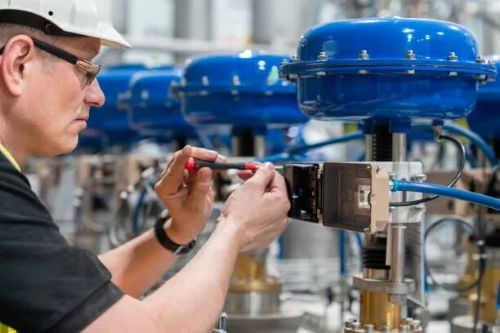


Understanding Control Valve Controllers: Types, Technologies & Their Role in Industrial Systems
We are a leading control valve manufacturer in China, providing high-quality valves and control actuators customized to meet a wide range of industrial applications.
Control valves are essential components in industrial systems, tasked with regulating the flow, pressure, or temperature of fluids. Central to their operation is the control valve controller, a device that adjusts valve position based on feedback from process sensors. By comparing real-time process variables (like pressure or flow rate) with predefined setpoints, the controller ensures optimal system performance.
A control valve controller—sometimes referred to as a valve pilot or pressure pilot—monitors a process variable and signals the valve actuator to adjust the valve position. This closed-loop control helps maintain stable and efficient operating conditions, preventing system overload or inefficiency.
Pneumatic control valves are widely used in industries requiring reliable and fast response. Powered by compressed air, these valves use pneumatic actuators and are often guided by pneumatic pilots.
The pilot senses system pressure and sends a pneumatic signal to the actuator.
The actuator, via a diaphragm or piston, adjusts the valve stem to control flow.
A mechanical positioner ensures the valve’s actual position matches the controller’s signal.
Mechanical Positioners: Provide manual calibration and rugged control.
Digital/Smart Positioners: Use microprocessors for automatic calibration, diagnostics, and remote monitoring. These are ideal for integrating with SCADA or DCS systems.
Reliability in harsh environments.
Fast response time for real-time adjustments.
Cost-effective operation with low maintenance.
Oil & gas, chemicals, water treatment, and general manufacturing.
Electric control valves use electric motors instead of air for actuation. They’re preferred in applications needing high precision and integration with automated systems.
An electric actuator receives commands from a controller such as a PLC or RTU.
The actuator moves the valve to the required position based on real-time feedback from sensors.
A feedback loop continuously corrects the valve position for accurate process control.
Electric Pilots: Often embedded in PLCs or RTUs for complex control logic.
Position Feedback Devices: Use encoders or sensors to report exact valve position.
High precision for demanding applications.
Seamless integration with automation platforms (SCADA, DCS).
Energy-efficient with no compressed air requirements.
HVAC, pharmaceuticals, food processing, and advanced water treatment.
Regardless of type, all control valve systems include:
Control Valve: Regulates fluid flow based on actuator position.
Controller: Compares sensor feedback with setpoints and signals actuator movement.
Positioner: Aligns actuator movement with control signal.
Pilot: Modulates pressure to influence valve actuation (more common in pneumatic systems).
Feedback Sensors: Continuously monitor process variables and valve position.
Improved Process Efficiency: Maintain optimal operating conditions through constant adjustment.
Operational Cost Savings: Optimize energy and material usage.
Extended Equipment Lifespan: Reduce wear and protect critical components.
Enhanced Safety: Prevent over-pressurization and fluid starvation.
Control valve controllers—whether pneumatic or electric—are vital for regulating flow, pressure, and temperature in complex industrial systems. As automation advances, controllers are evolving with smart features like diagnostics, self-calibration, and remote access. Choosing the right valve and control system ensures not only efficient operations but also long-term reliability and safety across a wide range of industrial processes.Know more about Google SEO Directory
